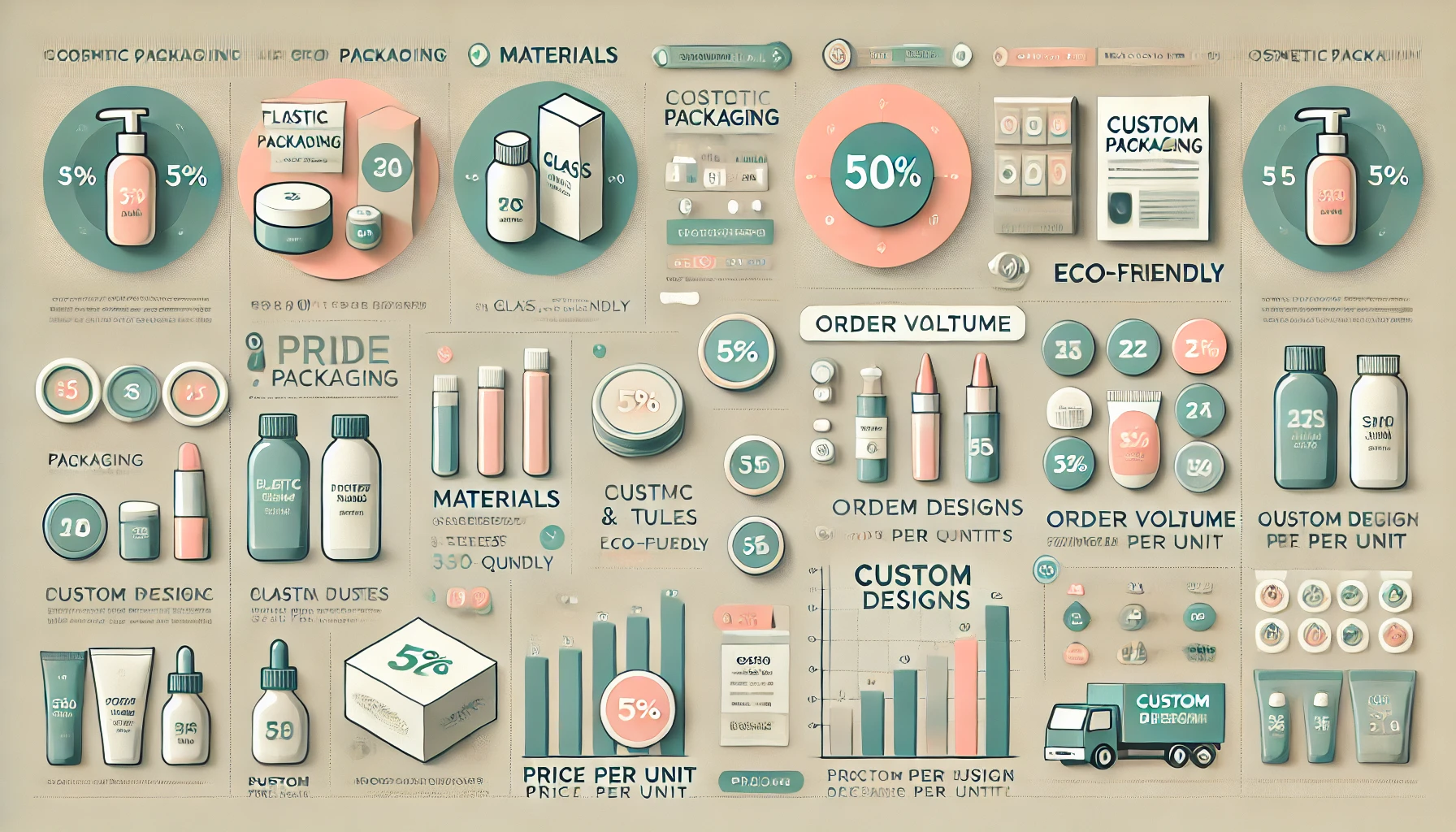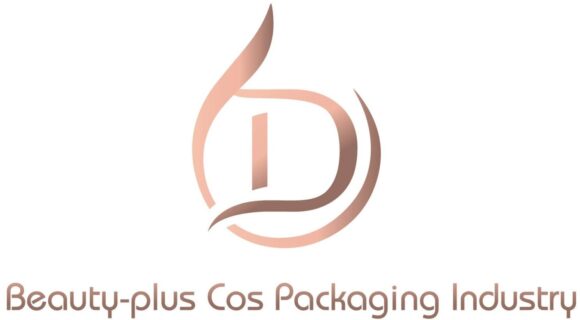
Are you wondering how much you should budget for cosmetic packaging? Packaging costs can vary widely depending on material, design, and order volume. Let’s break it down for you.
Cosmetic packaging costs range from a few cents for basic designs to several dollars for premium, custom options.
Understanding the factors that influence pricing helps you plan your budget effectively. Let’s explore the details.
💰 How much should product packaging cost?
Packaging costs should balance affordability and quality. How much should you actually spend?
Product packaging typically costs between 1% to 30% of the product’s retail price, depending on the market segment and packaging type.
Understanding these benchmarks allows you to allocate resources effectively without overspending.

Packaging Cost Benchmarks
- Low-Cost Segment: Budget packaging often costs less than 5% of the product price, suitable for high-volume, low-margin items.
- Mid-Range Segment: Medium-quality packaging can cost 10%-15% of the retail price, balancing affordability and appeal.
- Premium Segment: High-end packaging may cost 20%-30% of the retail price, emphasizing luxury and exclusivity.
| Market Segment | Packaging Cost (%) | Example Packaging Options |
|---|---|---|
| Low-Cost | <5% | Basic plastic wraps1 |
| Mid-Range | 10%-15% | Branded plastic bottles or jars |
| Premium | 20%-30% | Custom sustainable options2 |
What is the best packaging for cosmetics?
Choosing the right packaging impacts both cost and brand perception. What options are available?
The best cosmetic packaging varies based on the product, balancing functionality, sustainability, and design appeal.
Packaging should protect the product while enhancing the consumer experience. Different materials offer unique advantages.
Factors Influencing Packaging Choice
- Material Cost: Plastic is affordable but less sustainable, while glass packaging3 is premium but more expensive.
- Design Complexity: Custom shapes and designs increase costs.
- Sustainability: Biodegradable options4 often cost more upfront but appeal to eco-conscious buyers.
| Material | Unit Price Range (USD) | Typical Use Cases | Notes |
|---|---|---|---|
| PET | $0.15 – $0.35 | Toner bottles, serum pumps | Lightweight, recyclable |
| PP | $0.12 – $0.30 | Cream jars, closures | Cost-effective, common for caps |
| Acrylic | $0.50 – $1.20 | Luxury jars, lotion bottles | Glossy look, heavier feel |
| Glass | $0.40 – $1.80 | Serums, essential oils | Premium, breakable, heavy |
| Aluminum | $0.30 – $0.90 | Deodorants, minimalist skincare | Sustainable, high-end appeal |
Prices above are approximate and depend on size, decoration, and mold availability.
How much does packaging cost compared to product cost?
The relationship between packaging and product costs is critical. How does packaging impact profitability?
Packaging often constitutes 10%-40% of the total production cost, depending on the industry and product type.
This ratio helps determine if your packaging aligns with your profit margins and brand strategy.
Packaging vs. Product Cost
- Mass-Market Products: Packaging costs are minimal to maximize profit margins.
- Luxury Goods: Packaging costs are higher to reflect premium branding.
- Custom Products: Tailored packaging often leads to higher cost ratios.
🧮 How to Estimate Packaging Cost?
Estimating packaging costs accurately is essential for budgeting. How do you approach it?
Estimate packaging costs by considering material types5, design, order volume, and shipping expenses. Request detailed quotes from suppliers.
Accurate cost estimation avoids unexpected expenses and ensures profitability.
Steps to Estimate Costs
- Identify Materials: Choose between plastic, glass, metal, or sustainable options.
- Calculate Design Fees: Include the cost of artwork, molds, or tooling for custom designs.
- Consider Order Volume: Higher quantities often reduce per-unit costs.
- Factor in Shipping: Include transportation and customs duties for imported packaging.

| Cost Factor | Description | Impact on Budget |
|---|---|---|
| Material Type | Plastic, glass, or sustainable | Varies widely |
| Customization | Design complexity | Increases cost |
| Order Volume | Higher quantities | Reduces per-unit cost |
| Shipping | Transport and customs | Adds to total cost |
🌱 Eco-Friendly Options vs Cost
| Material | Cost Impact | Benefit |
|---|---|---|
| PCR Plastic | ↑ 5–10% | Recycled & recyclable |
| Kraft Paper | — | Lightweight, sustainable look |
| Glass (Frosted) | ↑ 20–30% | Premium feel, reusable |
✅ Final Checklist
- [x] Does packaging align with your price tier?
- [x] Did you compare MOQ-based pricing?
- [x] Do you have a balance of look vs logistics?
- [x] Is it recyclable or reusable?
- [x] Have you tested samples?
❓ Frequently Asked Questions About Cosmetic Packaging Costs
How much does cosmetic packaging typically cost?
Cosmetic packaging can range from $0.15 to over $5.00 per unit, depending on the material, capacity, decoration, and order volume. For example, PET bottles are usually cheaper than glass or acrylic containers.
What factors influence the cost of cosmetic packaging?
Key factors include:
- Material (PET, PP, acrylic, glass, aluminum)
- Decoration (spray coating, hot stamping, printing)
- MOQ (the higher the quantity, the lower the per-unit cost)
- Mold requirements (custom molds add tooling fees)
- Logistics (shipping costs for heavier materials like glass)
Is glass packaging more expensive than plastic?
Yes, generally glass is more costly than plastic due to its weight, fragility, and shipping requirements. However, it offers a premium feel and is often preferred for luxury brands.
Can I lower my packaging cost without compromising quality?
Absolutely. Choosing stock molds, simplifying decoration (e.g., skipping metalizing), and using recyclable materials like PET can help reduce cost while maintaining a professional appearance.
What’s the MOQ for custom cosmetic packaging?
MOQ usually starts from 5,000 pieces for most custom plastic packaging. However, some suppliers offer lower MOQs if you choose stock items or accept neutral packaging.
📲 Want a Custom Quote?
👉 Click below to chat directly with our packaging advisor!
Conclusion
Cosmetic packaging costs vary by material, design, and order volume. Balancing these factors helps you manage your budget and build a successful brand.
-
Explanation of common and affordable plastic packaging options for cosmetics. ↩
-
Benefits of custom sustainable packaging for eco-conscious branding. ↩
-
Advantages of using glass packaging for premium products. ↩
-
Explanation of biodegradable packaging options for reducing environmental impact. ↩
-
Overview of different material types used in packaging and their cost implications. ↩


